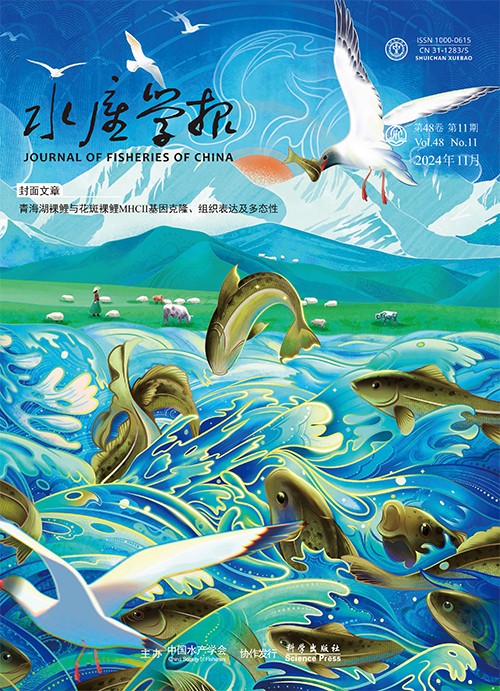Hemolysis of turbot(Scophthalmus maximus)blood cell with Quillaja saponaria saponin
Q4 Environmental Science
引用次数: 0
Abstract
The correlation between hemolysis time and concentration of saponin(2.5,5,12.5,25,50 and 125 mg/L)was analyzed via microscope observation.In vitro hemolysis rate of turbot blood cells in different concentrations of saponin(2.5,5,12.5,25 and 50 mg/L)at 20 and 4 ℃,for different time duration were tested respectively.To investigate the toxicity of saponin extracted from Quillaja saponaria to turbot(Scophthalmus maximus),median lethal concentration(LC50)was calculated by immersing the turbot in sea water with different concentrations of saponin.In addition,the lactic dehydrogenase(LDH)activities in serum of turbot after bathing in saponin seawater solution(0,5,25 and 45 mg/L)were analyzed.The results indicated that the correlation between hemolysis time of erythrocytes and saponin concentration showed a logarithmic negative correlation(R2=0.98),and that saponin could also induce hemolysis to leukocytes of turbot.Saponin in concentration of 50 mg/L could result in 100% hemolysis at 20 ℃ for 5 min,in contrast,only 42.2% hemolysis was observed at 4 ℃.The 24 h LC50 of saponin for S.maximus was 64.85 mg/L.In this report,from cell level,the evaluation of the toxicity of saponin to blood cells for hemolysis was made,which will theoretically support its safe application in aquaculture.大菱鲆(Scophthalmus maximus)血细胞溶血的皂角皂苷
显微镜观察溶血时间与血清皂苷浓度(2.5、5、12.5、25、50、125 mg/L)的相关性。分别测定了不同浓度的皂苷(2.5、5、12.5、25、50 mg/L)在20、4℃、不同时间下对大菱鲆血细胞的体外溶血率。为研究皂角皂苷对大菱鲆(Scophthalmus maximus)的毒性,将大菱鲆浸泡在不同浓度皂角皂苷的海水中,计算其中位致死浓度(LC50)。此外,测定了大比目鱼在0、5、25和45 mg/L皂苷海水溶液中浸泡后血清乳酸脱氢酶(LDH)活性。结果表明,大菱鲆红细胞溶血时间与皂苷浓度呈对数负相关(R2=0.98),皂苷也能诱导大菱鲆白细胞溶血。50 mg/L浓度的皂苷在20℃作用5 min时溶血率为100%,而在4℃作用下溶血率仅为42.2%。皂苷对大菱鲆的24 h LC50为64.85 mg/L。本报告从细胞水平评价了皂苷对血细胞的溶血毒性,为其在水产养殖中的安全应用提供理论支持。
本文章由计算机程序翻译,如有差异,请以英文原文为准。
求助全文
约1分钟内获得全文
求助全文
来源期刊

水产学报
Environmental Science-Management, Monitoring, Policy and Law
CiteScore
1.40
自引率
0.00%
发文量
5213
期刊介绍:
"Fisheries of" mainly reflects the results of scientific research and development of the direction of aquaculture for domestic and foreign academic exchanges Fisheries Service. Mainly basic research published in Fisheries, aquaculture and proliferation of fishing waters environmental protection, preservation of aquatic products processing and utilization, fishing equipment, and other aspects of mechanical papers, research briefings and reviewed.
 求助内容:
求助内容: 应助结果提醒方式:
应助结果提醒方式:


